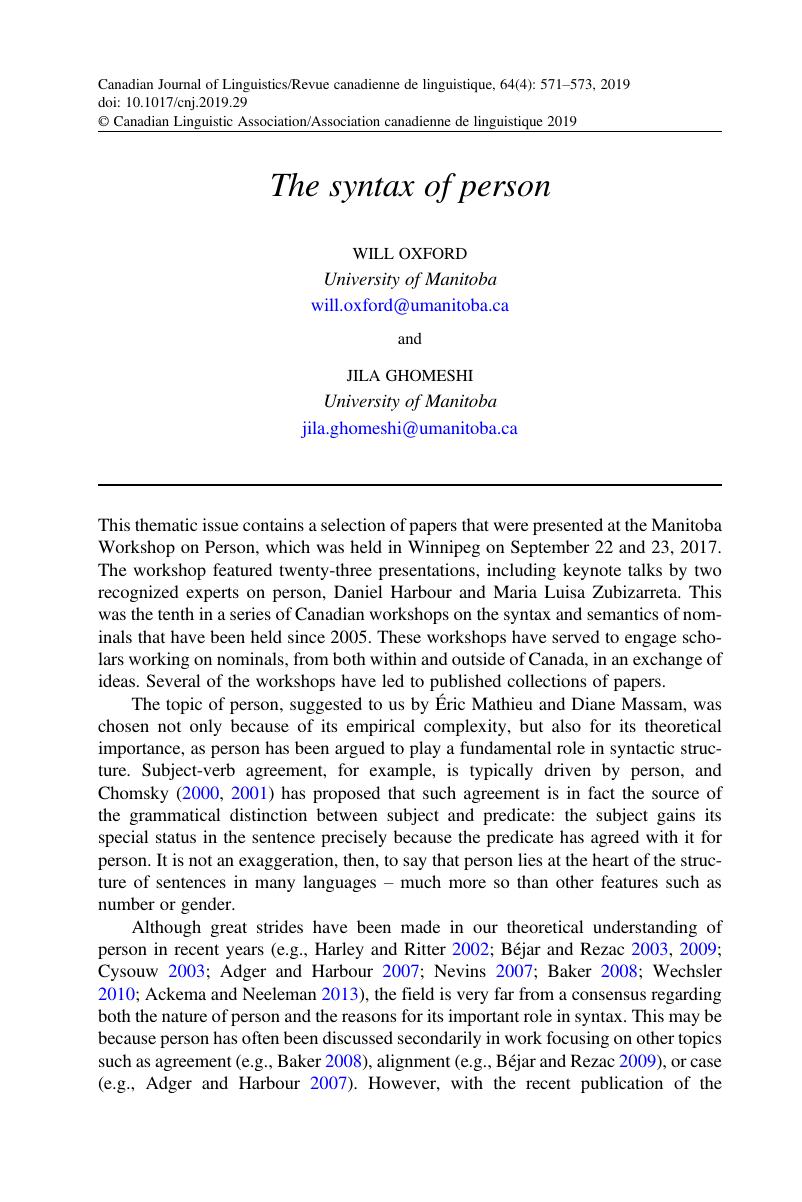No CrossRef data available.
Article contents
The syntax of person
Published online by Cambridge University Press: 21 October 2019
Abstract
An abstract is not available for this content so a preview has been provided. Please use the Get access link above for information on how to access this content.

- Type
- Introduction
- Information
- Canadian Journal of Linguistics/Revue canadienne de linguistique , Volume 64 , Issue 4 , December 2019 , pp. 571 - 573
- Copyright
- Copyright © Canadian Linguistic Association/Association canadienne de linguistique 2019
References
Ackema, Peter, and Neeleman, Ad. 2013. Person features and syncretism. Natural Language and Linguistic Theory 31(4): 901–950.Google Scholar
Adger, David, and Harbour, Daniel. 2007. Syntax and syncretisms of the Person Case Constraint. Syntax 10(1): 2–37.Google Scholar
Baker, Mark C. 2008. The syntax of agreement and concord. Cambridge: Cambridge University Press.Google Scholar
Béjar, Susana, and Rezac, Milan. 2003. Person licensing and the derivation of PCC effects. In Romance linguistics, ed. Pérez-Leroux, Ana Teresa and Roberge, Yves, 49–62. Amsterdam: John Benjamins.Google Scholar
Chomsky, Noam. 2000. Minimalist inquiries: The framework. In Step by step: Essays on Minimalism in honor of Howard Lasnik, ed. Martin, Roger, Michaels, David, and Uriagereka, Juan, 89–155. Cambridge, MA: MIT Press.Google Scholar
Chomsky, Noam. 2001. Derivation by phase. In Ken Hale: A life in language, ed. Kenstowicz, Michael, 1–52. Cambridge, MA: MIT Press.Google Scholar
Cysouw, Michael. 2003. The paradigmatic structure of person marking. Oxford: Oxford University Press.Google Scholar
Harley, Heidi, and Ritter, Elizabeth. 2002. Person and number in pronouns: A feature-geometric analysis. Language 78(3): 482–526.Google Scholar
Nevins, Andrew. 2007. The representation of third person and its consequences for Person-Case effects. Natural Language and Linguistic Theory 25(2): 273–313.Google Scholar
Wechsler, Stephen. 2010. What ‘you’ and ‘I’ mean to each other: Person marking, self-ascription, and theory of mind. Language 86(2): 332–365.Google Scholar


